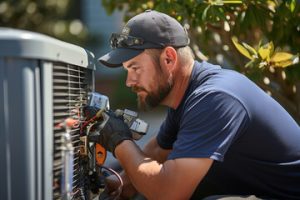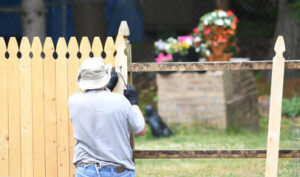The basic function of any HVAC system is to move heat from one area to another. During the cooling process, refrigerant absorbs heat and then travels back to the compressor to be pressurized again.

A new HVAC Round Rock system is a significant investment, but can boost home value and reduce energy costs. Here are some tips to help you choose the right system for your needs.
HVAC systems help to regulate temperatures, control humidity and air circulation in homes and businesses. They also filter and purify the indoor air, keeping it clean from pollutants and allergens. This is why home heating and cooling systems are essential to maintain comfortable, healthy environments. However, many people are confused by the different components of their system, the costs and key terms involved, and how these products and services affect the environment.
The most common type of HVAC system is the split system. These are easily identifiable by their separate indoor and outdoor units, and they have a refrigeration cycle that circulates refrigerant between them to absorb and expel heat from the air. The system is also equipped with a fan to blow the hot or cold air throughout the house via the ductwork, and a fan to pull fresh outdoor air into the house.
Those who want to limit the impact of their HVAC system on the environment can select an energy efficient model with a high SEER rating, which is the industry standard measure of efficiency. They can also choose a heat pump, which operates like an air conditioner but is able to reverse the flow of the refrigerant and absorb and release heat as needed.
Traditional gas furnaces operate by burning fossil fuels to generate heat, which they then distribute through ductwork to warm the building. These systems are not as eco-friendly as alternatives, such as heat pumps that use low-emissions electricity to move energy around the building and heat it up.
Many heating systems utilize ozone-depleting hydrofluorocarbons (HFCs), which contribute to the depletion of Earth’s ozone layer and climate change. Legislation is currently forcing the industry to switch to safer, more environmentally friendly refrigerants with a lower global warming potential.
Whether you have an old system that requires replacement or are considering investing in a new one, speak with a local service provider to learn more about the different options available. An experienced technician can not only help you to pick a replacement that will reduce the environmental impact of your HVAC system, but they can recommend the best MERV rated filters for your home or business and give you advice on the most efficient way to operate it.
Ventilation
One of the first things people think about when hearing the acronym HVAC is heating and cooling. However, the V in HVAC stands for ventilation as well. That’s a big part of what HVAC systems do, and it’s important for your comfort and health.
Ventilation allows fresh air to enter your space, and it expels pollutants like smoke, odors, dust, and allergens, as well as carbon dioxide. It also replenishes oxygen levels, which helps everyone feel more alert and energized. In fact, the ventilation component of HVAC systems is so important that ASHRAE sets ventilation standards for acceptable indoor air quality (IAQ).
A typical HVAC system has an air handler with an evaporator coil, blower fan, and air filter. It circulates conditioned air through ductwork, which is a network of pathways that distributes the conditioned air in your home or workplace. Air filters remove dirt, debris, and other contaminants from incoming air before it is distributed, and the blower fan pushes the filtered air through the ducts into spaces where you want it to go.
The evaporator coil in your HVAC system also reduces humidity by condensing water vapor from the warm, humid air. This air is then blown into your home or workspace, cooling the ambient temperature and lowering humidity. The cooled, condensed water vapor is then carried back to the compressor, where it’s pressurized into a liquid, and sent through the condenser coil to be turned back into a gas. In the process, it expels heat, which is blown into the space by the fan.
In addition to reducing humidity and maintaining comfortable temperatures, ventilation systems can also help with energy efficiency in your building. By ensuring that only the rooms you’re using are getting heated or cooled, it helps prevent waste in unoccupied spaces. These systems are popular with home owners, and they’re also often used in hotels, office buildings, or other commercial spaces.
The type of ventilation system you choose depends on your needs. There are two main types: natural and mechanical ventilation. Natural ventilation happens when air moves through windows, doors, and vents of its own accord. This can be a great option for your home, especially if you don’t have much money to spend on HVAC equipment. However, it can be less effective in larger spaces.
Air Filtration
Air filters remove pollutants, allergens and other particulate matter from the air that passes through the HVAC system. This not only keeps the air in the facility cleaner but also reduces wear and tear on the equipment. It is important to replace or clean the filter regularly to keep it working properly. Choosing a filter with a higher MERV rating means that it will capture more microscopic particles.
There are many different types of air filters, and they all have slightly different features. Some are designed to be permanent filters inside the ductwork of an entire facility, while others are portable room air cleaners intended to only clean a specific area. The most common type of air filter is the standard matted fiberglass filter that can be bought at any hardware store. These filters are inexpensive and easy to use, but they are not effective at removing all of the impurities in the air.
Fiberglass air filters have a rough surface that sieves larger particles from the air, but they cannot trap microscopic particulates and thus do not provide optimum filtration for people with respiratory conditions or allergies. They do, however, improve the air quality of an environment by reducing contaminants such as smoke, aerosols, odors, bacteria, viruses, molds and toxic gases.
Pleated filters, which cost a little more than fiberglass ones, are more effective at capturing microscopic particulates and are recommended for most homes. They can be purchased in a variety of sizes and shapes, but they are all constructed from the same material and function in the same way. The difference is the quality of the manufacturing process used to create them. For example, Camfil has developed a patented method for creating pleated filters that ensures uniformity of the pleats and prevents them from clogging easily.
Other types of air filters include evaporative and electrostatic air cleaning systems that use electric current to convert oxygen molecules into charged ions. The negative ions attach to the positive ions on airborne particulates, making them heavier and causing them to fall to the ground, where they are trapped by the filter or a vacuum.
Refrigerant
The refrigerant in your air conditioning system is what allows it to absorb heat and transfer it away from your home, cooling the area. Refrigerants are chemical coolants that are capable of changing from liquid to gas and back again. Whether you call it Freon, R-22, R-410A or Puron, refrigerant has been the key to HVAC, refrigeration and air conditioning systems for years.
Refrigerants are found in the copper coils of an air conditioner. They run through several components, including the compressor, evaporator, expansion valve and condenser unit. As the refrigerant runs through the system, it absorbs heat from indoor air and releases it outdoors through the evaporator coils. Then, it moves to the compressor to be pressurized into a gas, and from there to the condenser unit to release its heat through condensation into a low-pressure liquid once again.
It’s this ability to change from liquid to gas and back again that makes refrigerants so valuable in air conditioning and refrigeration systems. However, the chemicals that make up refrigerants have a significant impact on the environment. This is why it’s so important to practice proper refrigerant handling and conduct regular leakage tests.
When a refrigerant leaks from your system, it can escape into the atmosphere where it can contribute to climate change. In addition, a leaky system can lead to excessive energy usage, causing your utility bills to increase.
Aside from affecting the environment, leaking refrigerants can also harm your health. They can contribute to asthma, respiratory problems and other respiratory conditions. Additionally, they can damage the environment by contaminating soil and water supplies.
Fortunately, refrigerants are becoming more environmentally friendly. The EPA’s Significant New Alternative Policy (SNAP) program has developed and approved alternatives that reduce the risk to human health and the environment, taking into account ozone depletion potential, global warming potential, flammability, toxicity and local air quality impacts.

